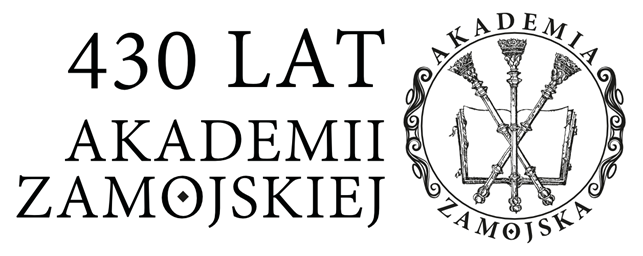Bartel Oskar, Filip Melanchton w Polsce, „Odrodzenie i Reformacja w Polsce” 1961, t. 6.
Bauch Gustav, Johann Turzo und Johann Hess, „Zeitschrift für Geschichte Schlesiens” 1901, Jg. 36.
Burbianka Marta, Adam Dyon i Kasper Lybisch – wrocławscy drukarze reformacyjni, „Roczniki Biblioteczne” 1961, R. 5.
Burbianka Marta, Andrzej Winkler, drukarz wrocławski XVI wieku, „Roczniki Biblioteczne” 1960, R. 4, z. 2.
Dola Kazimierz, Duchowieństwo śląskie w pierwszym okresie rozwoju reformacji, „Studia Teologiczno-Historyczne Śląska Opolskiego” 1999, t. 19, s. 121-134.
Dola Kazimierz, Opieka społeczna Kościoła, w: Historia Kościoła w Polsce, red. B. Kumor, Z. Obertyński, t. 1, cz. 2.
Dola Kazimierz, Pokuta kościelna na Śląsku w XV i XVI wieku, w: Studia nad początkami reformacji protestanckiej na Śląsku, Opole 2009.
Dola Kazimierz, Wieczerza Pańska u protestantów na Śląsku, w: Studia nad początkami reformacji protestanckiej na Śląsku, Opole 2009.
Dola Kazimierz, Opieka społeczna Kościoła, w: Historia Kościoła w Polsce, red. B. Kumor, Z. Obertyński, t. 1, cz. 2.
Engelbert Kurt, Aufzeichnungen des Breslauer Domherrn Stanislaus Sauer (+1535) über den Bischof von Salza (1520-1539), „Archiv für schlesische Kirchengeschichte” 1957, Bd. 15.
Engelbert Kurt, Die Anfänge des Lutherischen Bewegung in Breslau und Schlesien, „Archiv für schlesische Kirchengeschichte” 1960, Bd. 18.
Harasimowicz Jan, Funkcje katolickiego mecenatu artystycznego na Śląsku w dobie reformacji i „odnowy trydenckiej” Kościoła, „Sobótka” 1986, R. 41.
Harasimowicz Jan, Śląski luteranizm wieku reformacji – próba charakterystyki, „Sobótka” 1984, R. 39.
Hoffmann Herman, Petrus Zedlitz Fontinus, der ersted evangelische Prediger an die ehemaligen Kirche zum Heiligen Geist in Breslau, „Correspondenzblatt des Vereins für Geschichte der Evangelischen Kirche Schlesiens” 1928, Jg. 19.
Kielar Paweł, Dominikanie śląscy w okresie reformacji, w: Studia nad historią dominikanów w Polsce, red. J. Kłoczowski, t. 1, Warszawa 1975.
Konrad Paweł, Die Einführung der Reformation in Breslau und Schlesien, Breslau 1917.
Köstlin Julius, Johann Hess, der Breslauer Reformator, „Zeitschrift für Geschichte Schlesiens” 1864, Jg. 6.
Kretschmar Georg, Die Reformation in Breslau, Ulm 1960.
Kulak Teresa, Wrocław, Wrocław 1997.
Kumor Bolesław, Protestancka reformacja na ziemiach polskich, w: Historia Kościoła w Polsce, red. B. Kumor, Z. Obertyński, t. 1, cz. 2, Poznań-Warszawa 1974.
Mandziuk Józef, Działalność kościelna Jana V Turzo, biskupa wrocławskiego (1506-1520), „Colloquium salutis” 1978, t. 10.
Mandziuk Józef, Historia Kościoła katolickiego na Śląsku, t. 2, Warszawa 2011.
Mandziuk Józef, Kult Najświętszego Sakramentu na Śląsku w okresie reformacji protestanckiej i reformy katolickiej, w: W blasku Eucharystii, red. I. Dec, Wrocław 1996.
Mandziuk Józef, Postacie Kościoła katolickiego na Śląsku, Warszawa 2016.
Mandziuk Józef, Śląskie duchowieństwo diecezjalne a książka protestancka w XVI i XVII wieku, „Roczniki Biblioteczne” 1992, R. 36, nr 1-2.
Matusik Leokadia, Wawrzyniec Corvin, w: Ludzie dawnego Wrocławia, Wrocław 1958.
Niedziela Maurycy Lucjan, Niektóre przejawy kultu Eucharystii w dominikańskim kościele św. Wojciecha we Wrocławiu od XIV do XX wieku, w: W blasku Eucharystii, red. I. Dec. Wrocław 1996.
Pol Mikołaj, Jahrbücher der Stadt Breslau, Bd. 3, Breslau 1816.
Popiołek Kazimierz, Historia Śląska od pradziejów do 1945 roku, Katowice 1972.
Reisch Krzysztof, Geschichte des Klosters und der Kirche St. Dorothea in Breslau, Breslau 1908.
Sabisch Alfred, Der Messcanon der Breslauer Pfarrers Dr. Ambrosius Moibanus. Ein Beitrag zur Geschichte der protestantischen Gottesdienstes in Schlesien in der ersten Jahrzenten der Glaubensspaltung, „Archiv für schlesische Kirchengeschichte” 1938, Bd. 3.
Smacka Janina, Jan Turzo – humanista i mecenas kultury renesansowej, „Roczniki Sztuki Śląskiej” 1963, R. 2.
Swastek Józef, Starania i próby założenia uczelni akademickiej na Śląsku na przestrzeni XVI-XVIII wieku, „Colloquium salutis” 1974, t. 6.
Wąs Gabriela, Dzieje Śląska od 1526 do 1806 roku, w: Historia Śląska, red. M. Czapliński, Wrocław 2002.
Wattenbach Wilhelm, Űber der Veranlassung zum Abruck des Vinzenzklosters von Breslau im J. 1529, „Zeitschrift für Geschichte Schlesiens” 1862 R. 2.
Wybrane księgi symboliczne Kościoła ewangelicko-augsburskiego, oprac. A. Wantuła, W. Niemczyk, Warszawa 1980.



 Język Polski
Język Polski
 English
English
 Русский
Русский
 Slovenčina
Slovenčina
 Hrvatski
Hrvatski
